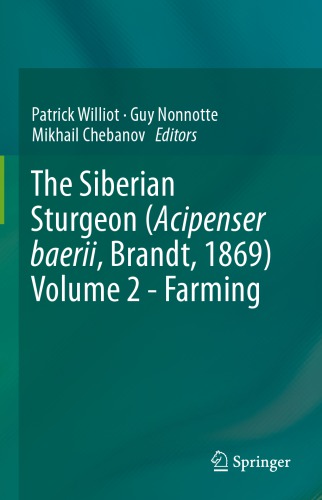Product desciption
The Siberian Sturgeon Acipenser Baerii Brandt 1869 Volume 2 Farming 1st Ed Patrick Williot by Patrick Williot, Guy Nonnotte, Mikhail Chebanov (eds.) 9783319616742, 9783319616766, 3319616749, 3319616765 instant download after payment.
The Siberian sturgeon, Acipenser baerii Brandt 1869 is the most widely farmed sturgeon species. Continuing from Volume 1, which focuses on the biology of the species, the present Volume 2 in turn examines farming aspects. It is divided into six parts, the first of which deals with reproduction and early ontogenesis, i.e. reproductive cycles, controlled reproduction, sperm cryoconservation, and weaning of larvae. The second covers the growing phase with a focus on food and feeding (management, fish meal replacement, potential endocrine disruptions, usefulness of prebiotics and immunostimulants, and nitrogen excretion). Production-related data are the focus of the third part and include: characteristics (countries, structures of production, evolution in production, economic features) of the gross production of the species (meat and caviar) worldwide, a method for assessing the quality of caviars, off-flavors management, and an example of production of fingerlings for restocking. Part four addresses selected long-term management issues: genetic variability of brood stocks, genome manipulation and sex control, and the advantages of hybrids. The next three chapters constitute the fifth part, which is devoted to health status (immunology and welfare). In closing, the absence of ecological risks of introducing the species in non-native waters is shown using two long-term documented examples (Russia and France). Three methodological chapters round out the volume, covering: in vitro incubation of ovarian follicles, a richly illustrated library of echographies and photos, and a detailed presentation of oxygen demand studies.


